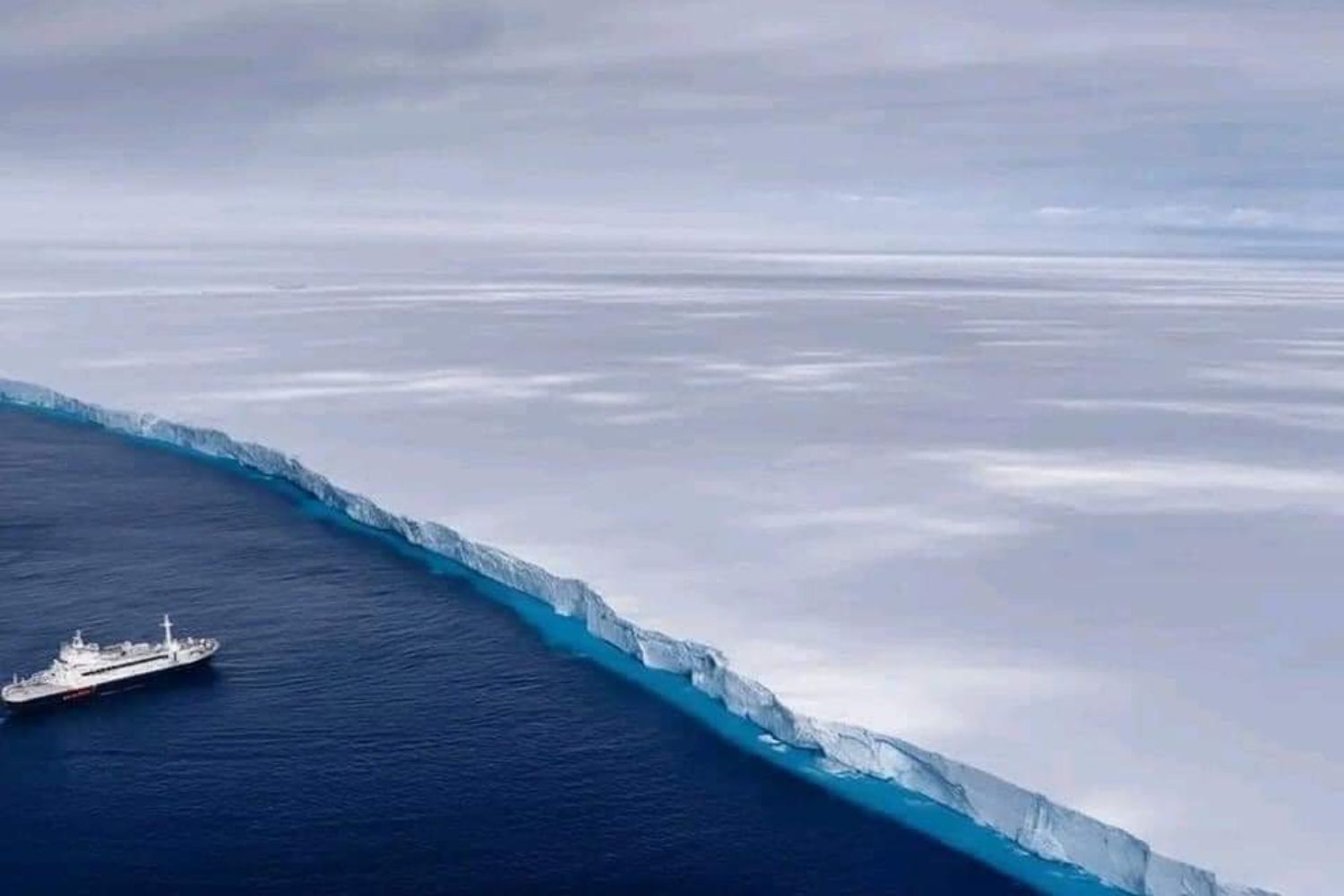The world’s largest iceberg, A23a, is breaking apart after nearly 40 years. Its spectacular demise offers scientists vital clues about climate change and the fragility of polar ecosystems.

@X
They called it A23a, and for nearly forty years it ruled the frozen seas, the largest iceberg on Earth. A drifting colossus weighing close to a billion tons, it has now entered its final chapter. The giant is breaking apart in spectacular fashion, its long voyage nearing an inevitable end. For scientists, that slow-motion collapse is more than a spectacle—it’s a rare opportunity to better understand the fragile balance of our planet.
The long story of A23a
Its journey began back in 1986, when it calved from the Filchner–Ronne Ice Shelf in Antarctica. For more than thirty years, however, it barely moved. Lodged against the seafloor of the Weddell Sea, it lay almost like a sleeping titan. Then, in 2020, it was finally set free, carried northward by powerful currents along a notorious route sailors call the “iceberg alley.” There is no return from that path. It is where great blocks of ice meet warmer waters and slowly, inevitably, disappear.
The staggering scale of a crumbling giant
At its peak, A23a covered about 1,430 square miles (3,700 km²)—roughly the size of Rhode Island. Today, satellite images show it has shrunk to less than half that area, about 656 square miles (1,700 km²). “The iceberg is rapidly breaking up and releasing very large pieces,” explained Andrew Meijers, an oceanographer with the British Antarctic Survey (BAS), in an interview with CNN.
In recent weeks, that disintegration has sped up dramatically. Exposed to warmer waters—just a few degrees above freezing—and battered by the swells of the South Atlantic, the megaberg has started shedding massive fragments, some as vast as 155 square miles (400 km²). It’s a process scientists expected, but the speed of it still caught them off guard. As Meijers put it: “It’s basically rotting from the bottom up. The water is just too warm for it to survive.”
The close call for penguins and seals
A23a’s voyage has not been without suspense. This past March, it ran aground briefly off the coast of South Georgia, a remote British territory that is home to some of the world’s largest colonies of penguins and seals. For a time, biologists feared the iceberg might block the animals’ access to feeding grounds, a threat that could have proved disastrous for their young. Relief came in late May, when the ice mass broke free and continued drifting.
More than just ice: a warning for the planet
Now its journey is almost over. Within weeks, scientists believe, A23a will disintegrate into pieces too small to track. Its melting will release an immense quantity of cold, fresh water into the ocean—an event that, according to BAS researchers, “is likely to have had a significant impact on organisms on the seafloor and in the surrounding waters.”
Calving icebergs is a natural process. Yet the broader context is far from natural. In recent decades, Antarctic ice shelves have lost billions of tons of ice, and the pace is accelerating. Warmer oceans and shifting currents—both tied to human-driven climate change—are fueling the trend.
The death of A23a is not just the story of a disappearing giant. It is a stark reminder of the fragility of polar ecosystems and a visible symbol of a world transforming faster than we can afford to ignore.
